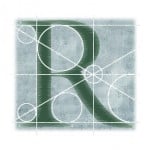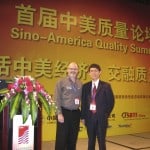Please log in to view this content
Search Results for: MTBF
Read
Fred Schenkelberg
My Reliability Engineering Passion
 Welcome to Accendo Reliability – join us and learn the art and craft of reliability engineering.
Welcome to Accendo Reliability – join us and learn the art and craft of reliability engineering.
As I started my career, I focused on mastering the tools. My first accelerated test plan and results used a Wiener diffusion model and non-linear regression techniques. Presenting the methods and results, my boss asked, “What does it mean to our business and customers?”
Hadn’t thought about that.
Mastering the tools is only one aspect of what we do. Effectively working with others and being able to influence and persuade at all levels of the organization are other key aspects of what we do.
Building on engagements that assessed and improved over 200 organizations, this site provides you the benefits of that experience. You will find tools, insights, tutorials, articles, webinars, and courses that will make you think.
Reliability engineering is more than statistics and a few tools. It’s about how and when to apply those tools for the greatest value to you, your organization and your customers. Here we will explore the broad expanse of reliability.
Improving Reliability Matters

I am the reliability expert at FMS Reliability, a reliability engineering and management consulting firm I founded in 2004. I left Hewlett Packard (HP)’s Reliability Team, where I helped create a culture of reliability across the corporation, to assist other organizations.
Reliability engineering is the key to improving operational efficiencies, customer satisfaction, and the bottom line in today’s global marketplace.
My passion is working with teams to improve product reliability, customer satisfaction, and efficiencies in product development; and to reduce product risk and warranty costs.
My areas of expertise are: reliability program development, accelerated life test design and analysis, reliability statistics, risk assessment, test planning, and training. Given the scope of my work, I am considered an international authority.
In addition to reliability consulting, my firm FMS Reliability offers reliability education and training, reliability engineering, digital content publishing, and reliability event production services.
My mission is first, to solve problems and generate results. And second, to improve each client’s understanding and capabilities concerning reliability so that they can solve similar issues themselves if they arise in the future.

I am a teacher, coach, and mentor. Clients and colleagues value my integrity and “can-do” attitude. I live by the motto, “Do. Or do not! There is no try….” as proclaimed by Yoda to Luke Skywalker in the swamps of Dagobah. I also believe in taking risks ─ what rock climber and world explorer doesn’t?
Career Highlights Span 20+ Years
My skills in reliability engineering consulting and professional development were built over 20+ years of experience in the field, during which time I worked on over 150 design and maintenance programs.
I have expertise in reliability design, engineering and management practices, reliability engineering management training, reliability program assessment, reliability statistics, accelerated life data analysis, quality control, and engineering tools and practices.
My background includes:
- Degrees in physics and statistics
- Math, electrical, polymer engineering experience
- Advanced problem solving skills
- Leadership and communication skills
I established and built the Hewlett Packard (HP) Corporate Reliability Program which resulted in a broad range of HP product qualifications and assessments. I also conducted research and development on a variety of HP product reliability management challenges.
I previously worked as a design and manufacturing engineer on HP DeskJet printers. Before HP, I held several positions with Raychem Corporation including research and development of accelerated life testing of polymer-based heating cables.
Lecturer, Speaker, Blogger… I Have a Lot to Say
A graduate course lecturer with the University of Maryland on reliability engineering management. The initial Executive Producer of the ASQ Reliability Division Webinar program. A and a member of various IEEE reliability standards development team.
Previously a member of the U.S. delegation as a voting member of the IEC TC 56 – Durability. And a current voting member of the U.S. TAG to ISO TC 69 Applications of statistical methods teams.

A prior speaker at the Reliability and Maintainability Symposium (RAMS®) and other conferences, I also blog at NoMTBF.com, CRE Preparation Notes, and Musings. Plus, host or produce a few podcast shows including Speaking of Reliability, Accendo Reliability Webinar Series, and Dare to Know.
My Bachelor of Science in Physics is from the United States Military Academy and I have a Master of Science in Statistics from Stanford University. I enjoy rock climbing, triathlons, exploring the world, continual learning, and cooking.
Fred’s author archive lists contributions of articles and episodes.
 Ask a question or send along a comment.
Please login to view and use the contact form.
Ask a question or send along a comment.
Please login to view and use the contact form.Asking a Vendor for Reliability Data

Asking a Vendor for Reliability Data
Selecting as a supplier for components or subsystems involves many aspects, including the desired reliability performance.
Once selected, the ability of the supplier to provide items that meet or exceed the reliability requirements relies on their understanding of the requirements and operational conditions related to the specific item within the system.
It also relies on the supplier’s knowledge of their own design and manufacturing processes as it relates to reliability performance.
Supplier Reliability Program Maturity

It was late Friday afternoon and the phone rang. Which is rarely a good thing.
There seems to a significant spike in field failures due to one component. The initial failure analysis work reveals the issue started with a batch of parts received about two months ago and the flaw continues to appear in subsequent batches. [Read more…]
Confidence Interval for Variance

When using a sample to calculate a statistic we are estimating a population parameter. It is just an estimate and the sample due to the nature of drawing a sample may not create a value (statistic) that is close to the actual value (parameter). [Read more…]
Books

By Fred Schenkelberg in Reliability Engineering Management
130 pages, published 5/25/2015
This short book explores reliability metrics including MTBF and reliability. The choice to avoid using MTBF and switch to reliability should become obvious. Understanding our metrics and the behavior they promote allows reliability professionals to speak clearly and improve reliability performance.
Note: Soon to add Amazon and iBook versions. MagCloud provides print on demand and pdf versions.
Using The Exponential Distribution Reliability Function

It may be possible to pass the CRE exam knowing one formula.
The math elements of the exam may take a bit of time to solve, and knowing reliability statistics well is a good plan heading into the exam. Knowing the exponential distribution reliability function is one that you should memorize. [Read more…]
Reliability Block Diagrams Overview and Value

A reliability block diagram is a graphical and mathematical model of the elements of a system permitting the calculation of system reliability given the reliability of the elements.
The model reflects the reliability performance structure including series, parallel, standby and other arrangements of system elements.
Each block in an RBD represents a component or subsystem of the system. The organization and connecting lines represent the reliability structure of the system and may or may not be representative of the system’s functional block diagram. [Read more…]
Duration and Reliability Goals

Coupled with probability is the duration over which the probability applies.
For example, if we desire 99 of 100 to survive, we must state over which period of time this applies. It is proper to state the couplet of 99% reliable over 1 year.
It is not sufficient to define reliability as ‘5-year product’ as it does not contain the information related to how many are expected to survive the 5 years. Likewise, it is not sufficient to say a product has 5 – 9’s reliability (meaning the probability of failure is less than 0.00001) as it does not contain the duration.
If the product has high reliability for only a few seconds, that does not help us make judgments about the first year of life. [Read more…]
Duane Plot of Cumulative Failures Over Time

Let’s take a graphical view of reliability improvement that occurs during product development or improvement projects.
If we are making improvements the system reliability should increase. We can use the build, test, fix approach to measure improvements, find failures, design improvements, and repeat. [Read more…]
How to Break into Reliability Engineering

I’ve recently received a couple of notes from individuals looking at starting a career in reliability engineering. One is a student looking at a career path, another a working engineer with an interesting in reliability.
Both asked how to land a position given no reliability engineering experience.
Hum, I don’t know anyone that had reliability engineering experience before they got started working in reliability engineering. Not counting taking apart the family toaster and trying to repair it before Mom got home as a kid.
Censored Data and CDF Plotting Points

Reliability testing and data collection is a messy business.
We rarely receive perfect data where all units involved have a precise time to failure record. Sometimes we do not the precise time to failure information or some of the units are still operating.
The data is censored.
There are a few common types of censoring, each of which has statistical techniques to appropriately account for the unknown elements. [Read more…]
Can you Delegate Reliability?

A common expectation consumers have concerning products is that the product works. The product provides value by performing one or more functions. Also, implicit with this expectation is the product will function over some duration. A reliable product meets or exceeds this common expectation.
Every product has a finite duration of successful operation before failure occurs.
Laplace’s Trend Test

A test to determine if the homogeneous Poisson model (HPP) is applicable given the data from an individual system is subject to the non-homogeneous Poisson model (NHPP).
This is an alternative test to using the Kendall-Mann Reverse Arrangement Test. [Read more…]
